-
 Bitcoin
Bitcoin $108400
-4.30% -
 Ethereum
Ethereum $4287
-6.30% -
 XRP
XRP $2.823
-6.41% -
 Tether USDt
Tether USDt $1.000
0.00% -
 BNB
BNB $859.4
-1.70% -
 Solana
Solana $208.7
-2.95% -
 USDC
USDC $0.9999
-0.01% -
 Dogecoin
Dogecoin $0.2144
-4.47% -
 TRON
TRON $0.3349
-3.35% -
 Cardano
Cardano $0.8284
-4.90% -
 Chainlink
Chainlink $23.45
-8.63% -
 Hyperliquid
Hyperliquid $44.41
-8.39% -
 Ethena USDe
Ethena USDe $1.000
-0.02% -
 Sui
Sui $3.307
-5.87% -
 Stellar
Stellar $0.3589
-7.15% -
 Bitcoin Cash
Bitcoin Cash $531.4
-4.71% -
 Avalanche
Avalanche $23.71
-4.51% -
 Hedera
Hedera $0.2263
-6.16% -
 Cronos
Cronos $0.2765
-13.02% -
 UNUS SED LEO
UNUS SED LEO $9.427
-1.34% -
 Litecoin
Litecoin $110.1
-3.63% -
 Toncoin
Toncoin $3.060
-4.36% -
 Shiba Inu
Shiba Inu $0.00001217
-3.86% -
 Polkadot
Polkadot $3.770
-5.96% -
 Uniswap
Uniswap $9.548
-4.51% -
 Dai
Dai $0.9999
-0.01% -
 Bitget Token
Bitget Token $4.533
-1.55% -
 Monero
Monero $260.7
-3.53% -
 Aave
Aave $307.9
-2.55% -
 Ethena
Ethena $0.6460
-2.60%
What are "gas fees" and why are they so high?
Gas fees in crypto compensate for computational energy on blockchains, varying by network demand, transaction complexity, and congestion—spiking during high activity.
Aug 29, 2025 at 08:54 pm
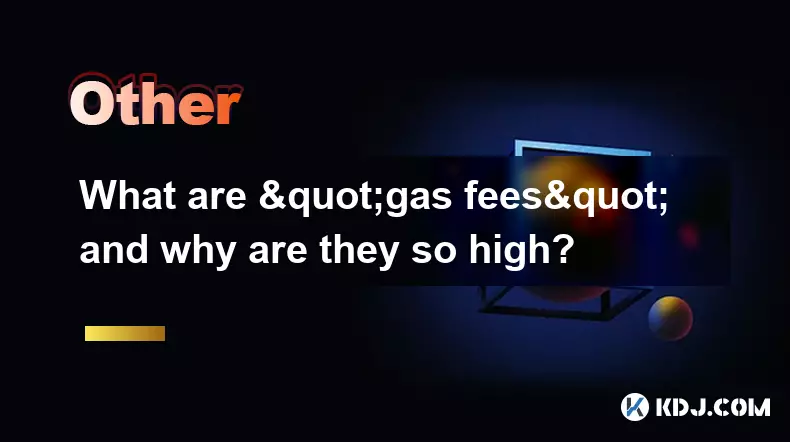
Understanding Gas Fees in the Cryptocurrency Ecosystem
1. Gas fees are payments made by users to compensate for the computational energy required to process and validate transactions on a blockchain network. These fees are denominated in small fractions of the native cryptocurrency, such as gwei in Ethereum, where 1 gwei equals 0.000000001 ETH. Every operation on a blockchain—whether sending tokens, interacting with smart contracts, or deploying decentralized applications—consumes a certain amount of gas based on its complexity.
2. The concept of gas was introduced to prevent spam and infinite loops in code execution. Without gas limits, malicious actors could flood the network with resource-heavy operations. Each transaction specifies a gas limit (maximum units of gas the sender is willing to use) and a gas price (how much they are willing to pay per unit). Miners or validators prioritize transactions with higher gas prices, creating a competitive bidding environment during peak usage.
3. Gas fees are not fixed and fluctuate dynamically based on network demand. When many users are transacting simultaneously—such as during NFT minting events, decentralized exchange launches, or speculative trading surges—the network becomes congested. This congestion leads users to increase their gas prices to have their transactions processed faster, driving up the overall cost.
4. Ethereum, being the most widely used smart contract platform, is particularly known for high gas fees during periods of heavy activity. Despite upgrades like Ethereum 2.0 and the transition to proof-of-stake, transaction demand often exceeds block space capacity, maintaining upward pressure on fees. Layer 2 solutions like Optimism and Arbitrum aim to alleviate this by processing transactions off-chain and settling them on Ethereum later at lower costs.
5. Other blockchains have adopted different fee models to improve scalability and affordability. For example, Binance Smart Chain and Polygon offer significantly lower fees by using more centralized consensus mechanisms. Solana uses a minimal fee structure supported by high throughput, though it has faced criticism over network outages. These alternatives attract users seeking cost-effective transactions, especially for micro-transactions or frequent trading.
Factors Driving High Gas Fees
1. Network congestion is the primary reason for elevated gas fees. As more decentralized applications gain popularity, the number of transactions competing for limited block space increases. During high-traffic events like major NFT drops, fees can spike to over $50 per transaction, making small transfers economically unviable.
2. Smart contract complexity plays a significant role. Interacting with DeFi protocols such as lending platforms or automated market makers requires multiple operations—approving tokens, checking balances, executing swaps—which consume more gas than simple token transfers. The more complex the interaction, the higher the fee.
3. Miner extractable value (MEV) contributes to inflated fees. Miners and validators can reorder, include, or exclude transactions to maximize their profit, often favoring those with higher gas prices. This creates an environment where users must overbid to ensure timely confirmation, especially for time-sensitive operations like arbitrage or liquidations.
4. Market speculation intensifies network load. During bull markets, traders execute numerous transactions across exchanges, wallets, and yield farming platforms. This speculative behavior increases demand for block space, pushing gas prices upward. Whale movements and large token swaps also generate ripple effects across the network.
5. Limited block size and block time constrain how many transactions can be processed per second. Ethereum, for instance, handles roughly 15–30 transactions per second. When demand exceeds this throughput, a backlog forms in the mempool, forcing users to raise their gas prices to jump the queue. This bottleneck effect is central to the fee escalation problem.
Strategies to Manage and Reduce Gas Costs
1. Monitoring gas price trends using tools like Etherscan’s gas tracker or GasNow allows users to time their transactions during low-usage periods, typically late at night UTC or during weekdays when activity dips. Executing transactions when demand is low can reduce fees by over 70% compared to peak hours.
2. Setting a custom gas price instead of relying on default wallet suggestions helps avoid overpayment. Wallets like MetaMask often recommend higher fees to ensure fast confirmation, but users willing to wait can manually lower the gas price and still get their transaction processed eventually.
3. Utilizing Layer 2 networks significantly cuts costs. Platforms like Arbitrum, zkSync, and Base offer Ethereum-compatible environments where transactions are batched and settled on the main chain later. Gas fees on these networks are often less than $0.01, making them ideal for frequent traders and DeFi users.
4. Aggregators like MetaMask Swaps or 1inch compare prices across multiple DEXs and optimize routes to minimize both slippage and gas consumption. These tools also account for the total cost of multi-step transactions, helping users avoid unnecessary smart contract interactions.
5. Some protocols implement gasless solutions using meta-transactions, where a third party pays the gas fee on behalf of the user. This model is common in gaming and social dApps, improving user experience by removing the need to hold native tokens just for transaction fees.
Frequently Asked Questions
What happens if I set a very low gas price?If the gas price is too low, the transaction may remain unconfirmed for hours or even days. It sits in the mempool until a miner includes it, which only happens when network congestion drops and lower-priced transactions become viable to process.
Can gas fees be refunded?Only the unused portion of the gas is refunded. If a transaction consumes 21,000 units of gas but the user sets a limit of 30,000, the remaining 9,000 units are returned. However, the gas price paid per unit is non-refundable, regardless of whether the transaction succeeds or fails.
Do all blockchains have gas fees?Most do, but they go by different names and operate under different models. For example, Bitcoin has transaction fees based on data size, while Solana charges a flat fee of ~$0.00025. The term “gas” is most commonly associated with Ethereum and EVM-compatible chains.
Why do failed transactions still cost gas?Even if a transaction fails, the network still expends computational resources to validate and execute it up to the point of failure. Users must pay for this processing, which prevents abuse through repeated failed contract calls designed to waste network resources.
Disclaimer:info@kdj.com
The information provided is not trading advice. kdj.com does not assume any responsibility for any investments made based on the information provided in this article. Cryptocurrencies are highly volatile and it is highly recommended that you invest with caution after thorough research!
If you believe that the content used on this website infringes your copyright, please contact us immediately (info@kdj.com) and we will delete it promptly.
- Pi Coin's Bullish Signs: Eyes on $0.365 Breakout and Beyond!
- 2025-08-29 21:50:12
- Bitcoin, Digital Health, Crypto Convergence: A New Era of Economic Resilience
- 2025-08-29 21:05:17
- BlockchainFX & Meme Coins: What's the Deal in 2025?
- 2025-08-29 19:05:12
- XRP Price Primed for Massive Rally? Raoul Pal Weighs In
- 2025-08-29 17:25:13
- Bitcoin's Future Value & Web Companies: A Perfect Storm?
- 2025-08-29 18:10:18
- Bitcoin Price Prediction: Institutional Wave Meets Reality Check, Says Research Firm
- 2025-08-29 15:30:16
Related knowledge
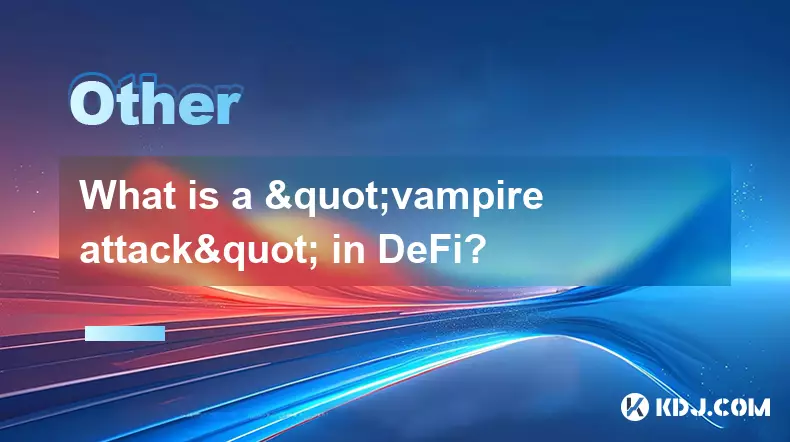
What is a "vampire attack" in DeFi?
Aug 29,2025 at 09:36pm
Understanding the Concept of Vampire Attacks in DeFi1. A vampire attack in the decentralized finance (DeFi) space refers to a strategic effort by one ...
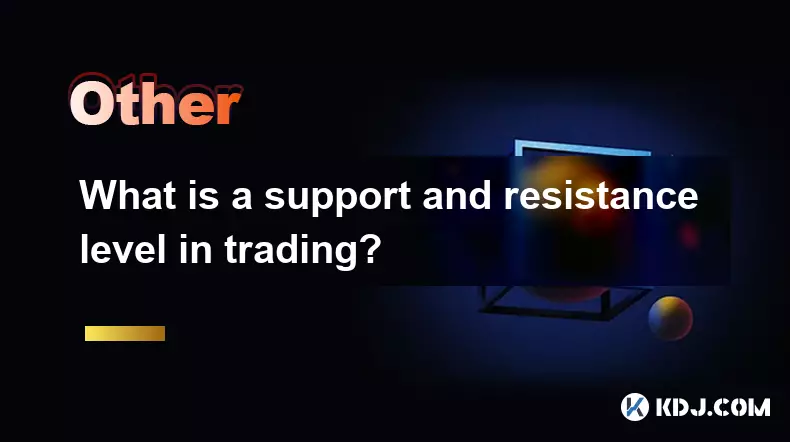
What is a support and resistance level in trading?
Aug 29,2025 at 07:00pm
Understanding Support and Resistance in Market Dynamics1. Support and resistance levels are foundational concepts in technical analysis, widely used b...

What are "diamond hands" and "paper hands"?
Aug 29,2025 at 09:54pm
Diamond Hands: The Mindset of Holding Through Volatility1. Diamond hands refer to the psychological resilience of holding onto cryptocurrency assets d...
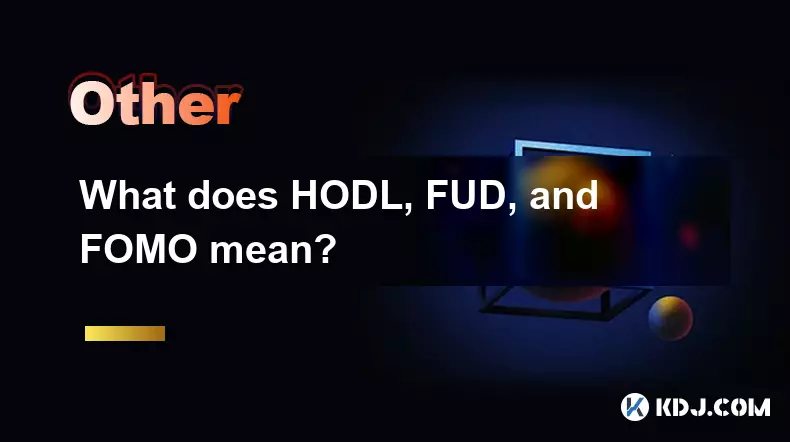
What does HODL, FUD, and FOMO mean?
Aug 29,2025 at 06:19pm
Fundamental Cryptocurrency Slang Every Trader Should KnowCryptocurrency communities thrive on unique terminology that reflects the culture, sentiment,...

What are "gas fees" and why are they so high?
Aug 29,2025 at 08:54pm
Understanding Gas Fees in the Cryptocurrency Ecosystem1. Gas fees are payments made by users to compensate for the computational energy required to pr...
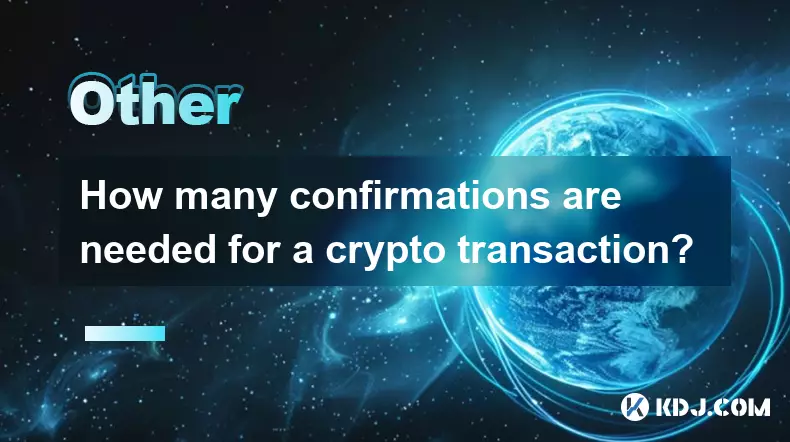
How many confirmations are needed for a crypto transaction?
Aug 29,2025 at 10:18pm
Understanding Blockchain Confirmations in Cryptocurrency Transactions1. When a cryptocurrency transaction is broadcast to the network, it enters a poo...

What is a "vampire attack" in DeFi?
Aug 29,2025 at 09:36pm
Understanding the Concept of Vampire Attacks in DeFi1. A vampire attack in the decentralized finance (DeFi) space refers to a strategic effort by one ...

What is a support and resistance level in trading?
Aug 29,2025 at 07:00pm
Understanding Support and Resistance in Market Dynamics1. Support and resistance levels are foundational concepts in technical analysis, widely used b...

What are "diamond hands" and "paper hands"?
Aug 29,2025 at 09:54pm
Diamond Hands: The Mindset of Holding Through Volatility1. Diamond hands refer to the psychological resilience of holding onto cryptocurrency assets d...

What does HODL, FUD, and FOMO mean?
Aug 29,2025 at 06:19pm
Fundamental Cryptocurrency Slang Every Trader Should KnowCryptocurrency communities thrive on unique terminology that reflects the culture, sentiment,...

What are "gas fees" and why are they so high?
Aug 29,2025 at 08:54pm
Understanding Gas Fees in the Cryptocurrency Ecosystem1. Gas fees are payments made by users to compensate for the computational energy required to pr...

How many confirmations are needed for a crypto transaction?
Aug 29,2025 at 10:18pm
Understanding Blockchain Confirmations in Cryptocurrency Transactions1. When a cryptocurrency transaction is broadcast to the network, it enters a poo...
See all articles

























































































